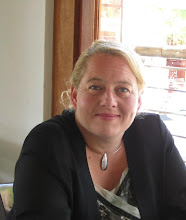Deryck Cooke's article on musical inspiration [page 34 of Music Culture and Society or originally published in: The Language of Music (Oxford: Oxford University Press, 1959), 168-175] highlights how composers produce creative works, and when examining this in the light of copyright law, it is easy to see how the law impacts on the natural tendencies and flow of culture.
Cooke contends that compositions are a combination of conception and inspiration. These can occur in either order or together. Conception is 'a vague sense of the nature, mood, and shape of the work to be composed, with the separate parts and the actual material as yet unrealized, or only partly realized...' Conception is derived from:
1. a literary text to be depicted
2. a literary idea used as a basis
3. an ideal or concept that the composer is drawn to; or
4. from a musical impulse to write a particular type of work (eg. a great symphony)
Inspiration is the 'sudden materialization of a musical idea'. He states:
...inspiration does not come from nowhere: nothing can come out of nothing. Music as we know it could not be created at all but for the existence of a long tradition of past music, and every composer draws continually on his (sic) experience of this tradition...
Cooke explains that every composer stores prior musical experiences in their subconscious and whilst most of it is forgotten or half forgotten, this is where inspiration comes from:
...what we call 'inspiration' must be an unconscious creative re-shaping of already existing materials in the tradition...
He suggests that this takes place in relation to melody, harmony and rhythm. In examining melody as an example he contends that there are only three possible explanations as to the regularity with which material is reused:
1. Plagarism
2. Unconscious 'cribbing'
3. Co-incidence
Plagarism is the deliberate use of a creation of another composer and is categorically what copyright law seeks to prevent by granting the 'limited' monopoly for creators to control the reproduction of their expression. As this is deliberate in nature it can not come within the notion of inspiration but the legal position is important and very much impacts on the other forms of inspiration.
Unconcious cribbing is the sudden return of a theme to a composers mind, of something created by another but which is not recognised as being of the former, when it reappears. Co-incidence, in traditional terms, refers to things happening together or in the same way, and it is this that Cooke suggests is the most likely explanation for the similarities between some compositions. In particular he contends that there are limited combinations and variations of the 12 notes, a finite number of shapes and expectations of tonal qualties which all lead to repetition in musical composition.
Copyright law has great difficulty in distinguishing between these forms of inspiration. Indeed what most composers might regard as inspiration may very well be legally defined as infringement.
Subconcious copying is a recognized basis for copyright infringement. To be established, a plaintiff must demonstrate that the defendant had access to the original work - this can be done either by evidence of direct access or by evidence that the work was widely distributed; and there must be substantial similarity between the two works.
The notion of subconcious copying was discussed by Judge Nelson in the case of Three Boys Music v. Michael Bolton 212 F.3d 477 (9th Cir. 2000):
Proof of widespread dissemination is sometimes accompanied by a theory that copyright infringement of a popular song was subconscious. Subconscious copying has been accepted since Learned Hand embraced it in a 1924 music infringement case: "Everything registers somewhere in our memories, and no one can tell what may evoke it . . . . Once it appears that another has in fact used the copyright as the source of this production, he has invaded the author's rights. It is no excuse that in so doing his memory has played him a trick." Fred Fisher, Inc. v. Dillingham, 298 F. 145, 147-48 (S.D.N.Y. 1924).... In modern cases, however, the theory of subconscious copying has been applied to songs that are more remote in time. ABKCO Music, Inc v. Harrisongs Music, Ltd., 722 F.2d 988 (2d Cir. 1983) is the most prominent example. In ABKCO, the Second Circuit affirmed a jury's verdict that former Beatle George Harrison, in writing the song "My Sweet Lord," subconsciously copied The Chiffons' "He's So Fine," which was released six years earlier. See id. at 997, 999. Harrison admitted hearing "He's So Fine" in 1963, when it was number one on the Billboard charts in the United States for five weeks and one of the top 30 hits in England for seven weeks...
With respect to the need for substantial similarity Judge Nelson stated:
Proof of the substantial similarity is satisfied by a two-part test of extrinsic similarity and intrinsic similarity. See Krofft, 562 F.2d at 1164. Initially, the extrinsic test requires that the plaintiff identify concrete elements based on objective criteria. See Smith, 84 F.3d at 1218; Shaw, 919 F.2d at 1356. The extrinsic test often requires analytical dissection of a work and expert testimony. See Apple Computer, Inc v. Microsoft Corp., 35 F.3d 1435, 1442 (9th Cir. 1994). Once the extrinsic test is satisfied, the factfinder applies the intrinsic test. The intrinsic test is subjective and asks "whether the ordinary, reasonable person would find the total concept and feel of the works to be substantially similar." Pasillas v. McDonald's Corp., 927 F.2d 440, 442 (9th Cir. 1991) (internal quotations omitted).
In this case Michael Bolton was held liable for $5.4 million in damages.
Now do you feel inspired?
Subscribe to:
Post Comments (Atom)


No comments:
Post a Comment